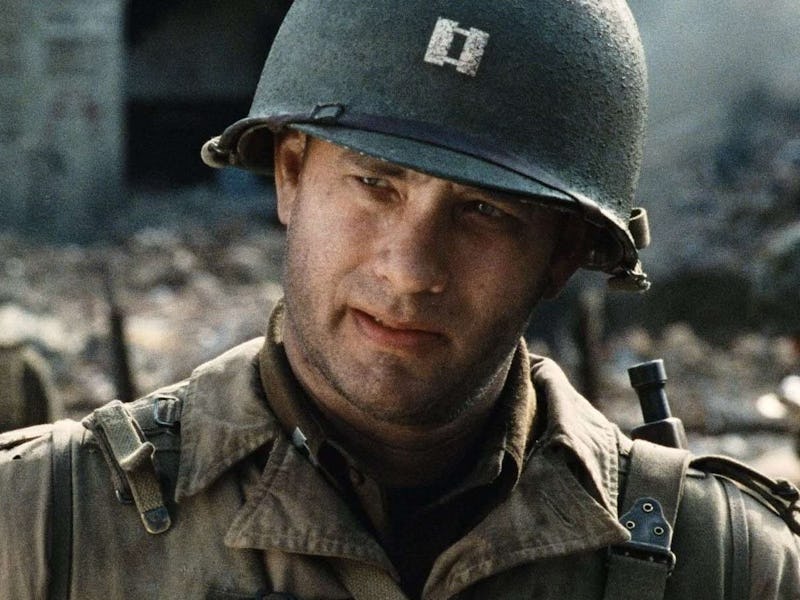In 1998, Steven Spielberg Rewrote the Blockbuster Playbook. Again.
Spoiler alert: World War II was not a fun time.

Very few filmmakers have changed the game as many times as Steven Spielberg. The Oscar-winning director has been a revolutionary artistic voice since 1975, when he essentially invented the summer blockbuster with Jaws. Nearly 20 years later, he pulled off a similar feat with Jurassic Park, which redefined how practical effects, CGI, and animatronics could be used on screen.
For the most part, it seems like Spielberg has left his trailblazing days behind. Twenty-five years ago, however, he rewrote the language of cinema one last time with Saving Private Ryan. The 1998 drama saw Spielberg return to the landscape of World War II with a very different style and perspective than he’d brought to Schindler’s List and the Indiana Jones films. The result was one of the most viscerally intense war movies ever made.
In particular, Saving Private Ryan’s unforgettable prologue, which ranks high among the greatest sequences of Spielberg’s career, changed the way military violence is portrayed on screen. It’s just as bone-rattlingly effective today as it was in 1998.
Saving Private Ryan kicks things off by sending you straight to Hell.
Technically, Saving Private Ryan doesn’t open with D-Day, but odds are most viewers don’t remember anything that happens before the Normandy invasion. To be fair, the movie makes it difficult to think of anything else. It’s a film that dedicates almost 30 minutes to one of the most astonishing and horrifying action sequences in American cinematic history.
The set piece follows John H. Miller (Tom Hanks), a traumatized U.S. military captain, as he leads his men across the mine-filled beaches of Normandy under a hail of Nazi gunfire. Unlike war films that bring a wide-angle, artistic detachment to the violence they depict, like Paths of Glory and Apocalypse Now, Saving Private Ryan throws you headfirst into the water, sand, and blood. Spielberg employs an uncustomarily handheld, cinéma vérité style for the prologue, which makes you feel the same confusion, terror, and despair as its soldiers.
The sequence’s documentary approach combines devastatingly well with Spielberg’s unrivaled eye for blocking and action. The constant shake of his camera injects a pure, frenetic energy into everything you see, whether it’s a man trying to pick up his own arm or the burning bodies of soldiers who never even made it off the boats. Spielberg tosses aside the stately approach of so many of the war movies that came before Saving Private Ryan in favor of one that frankly communicates the horror and chaos of war.
Saving Private Ryan features the most viscerally impactful action sequence of Steven Spielberg’s career.
In the years since Saving Private Ryan was released, its take on large-scale wartime violence has been endlessly replicated and imitated. Unfortunately, as is usually the case with Spielberg’s spiritual successors, none of the films that tried to borrow from Saving Private Ryan have matched it. Spielberg not only reinvented the war movie, but raised the bar higher than most directors can reach.
Saving Private Ryan isn’t perfect, or even the best film Spielberg has made. Its initial and climactic flash-forwards are overly sentimental, which clashes with its otherwise devastating story of self-sacrifice, trauma, and loss. But its flaws don’t take away from the power of its strengths, and at no point does Saving Private Ryan climb higher than during its D-Day sequence. With it, Spielberg reinvented the wheel. Again.
This article was originally published on